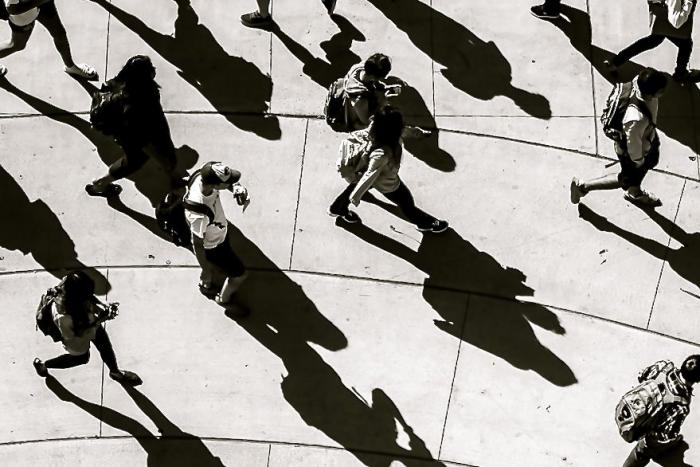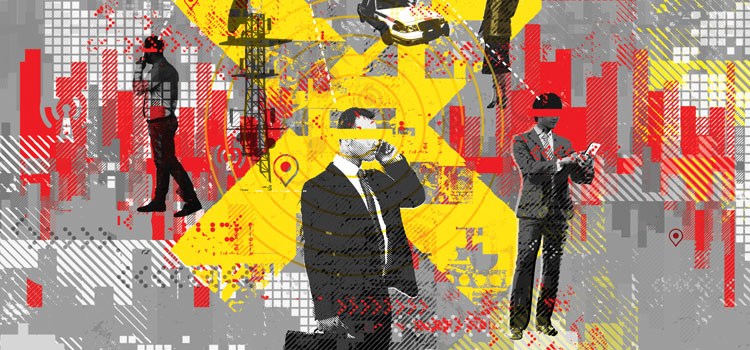Recently, some not very positive stories about face recognition systems have been seen in the news. Unfortunately, such stories are often based on negative feedback from people unfamiliar with the actual working principles of this technology. And although it is sometimes so tempting to reduce face recognition technology to a nightmare from Orwell’s books, it’s worthwhile to learn how to separate truth from myths in order to remove barriers to realizing the potential of this technology. Let's look at the most common myths related to this topic.

Myth №1: Face recognition technology allows to keep track of everyone.
False.
Contrary to popular belief about the use of this technology, face recognition systems cannot identify people who are not their target. If your data has not been entered, the system will not be able to recognize you.
Face recognition is most often used to track "persons of interest." This means that, in accordance with biometric protection standards, persons representing a danger, such as lawbreakers, can be added to the database to allow security personnel to track the appearance of such persons in the observed area. So who can they follow in this case? Most likely a dangerous parent who has lost parental rights, a thief-recidivist or a former employee who threw threats at the authorities.
As we can see, the system recognizes and tracks a narrow circle of predefined faces, while ignoring everyone else. The data of persons not included in the database is automatically deleted within a few seconds if they do not match the data of persons of interest to the system.
Myth №2: If your “face ID” is stolen, hackers will be able to track your every move.
False.
Face ID data is actually much harder to crack than other identifiers. Face recognition systems convert digital images into numerical data, based on the unique features of the face. This allows you to get a unique “signature” of a person, which is then attached to a specific person from the database and compared with other persons that appear on video from cameras. In addition, each face recognition system usually uses its own method of storing relevant data.
A much greater danger is that everyone’s faces are already freely available - on the pages of social networks. If someone wanted to track the movements and actions of a certain person, it would be much easier for him to do this by tracking social networks than trying to hack into face recognition systems.

Myth №3: Face recognition should be prohibited since racial prejudice lies at its root
False.
Providers and operators of any new technology must adhere to high standards to ensure that the technology meets consumer and human rights. Face recognition is a powerful tool, but it cannot replace a person in making informed and feasible decisions. The objective of such systems is to only provide real-time data that can be used by humans to study potential security risks or incidents.
Indeed, some face recognition algorithms show an unacceptable level of racial prejudice. However, this is not a fundamental disadvantage of the technology, but only the result of its insufficient development. As algorithms improve, such systems can not only get rid of racial prejudice, but also help reduce the incidence of racial discrimination in real life..
Myth №4: All face recognition systems work the same
False.
Face recognition and correlation algorithms can significantly differ from each other, depending on the features of their development and the data that was used for their training and testing. People continue to create and train such systems, so the human factor cannot be ruled out. The effectiveness of such systems directly depends on many factors that developers could consider or not take into account.
The difference between such systems is not only the algorithms they use, but also the features of working with sensitive data. Is data stored on physical media or in the cloud? Who owns and has access to data? Is data sold to third parties? Protecting the rights and confidentiality of face recognition systems often becomes a decisive factor for consumers.

Myth №5: You may be falsely convicted if the face recognition system mistakenly recognizes you as a criminal
False.
Although face recognition can be a valuable source of evidence for law enforcement, such systems do not work without human control. This myth is not based on the assumption that the “last word” remains with face recognition systems, when in reality such data are presented in criminal investigations along with other evidence.
Prior to face recognition, law enforcement officials had to manually scan through hundreds of photographs and snapshots of suspects in order to find the perpetrator. Face recognition systems only facilitate this search.
Whether we like it or not, face recognition has firmly entered our lives. To avoid infringement of rights and to wrap up progress for our own benefit, we should learn more about how such technologies really work. And although progress sometimes inevitably gives rise to certain fears, we must remember that face recognition can look for missing children, speed up checks at airports and hospitals, provide a non-contact way to control access and increase security in cities. A technology cannot be good or bad in itself - it all depends on how lawmakers and developers take into account potential risks and create universal and transparent rules for using such technology.
